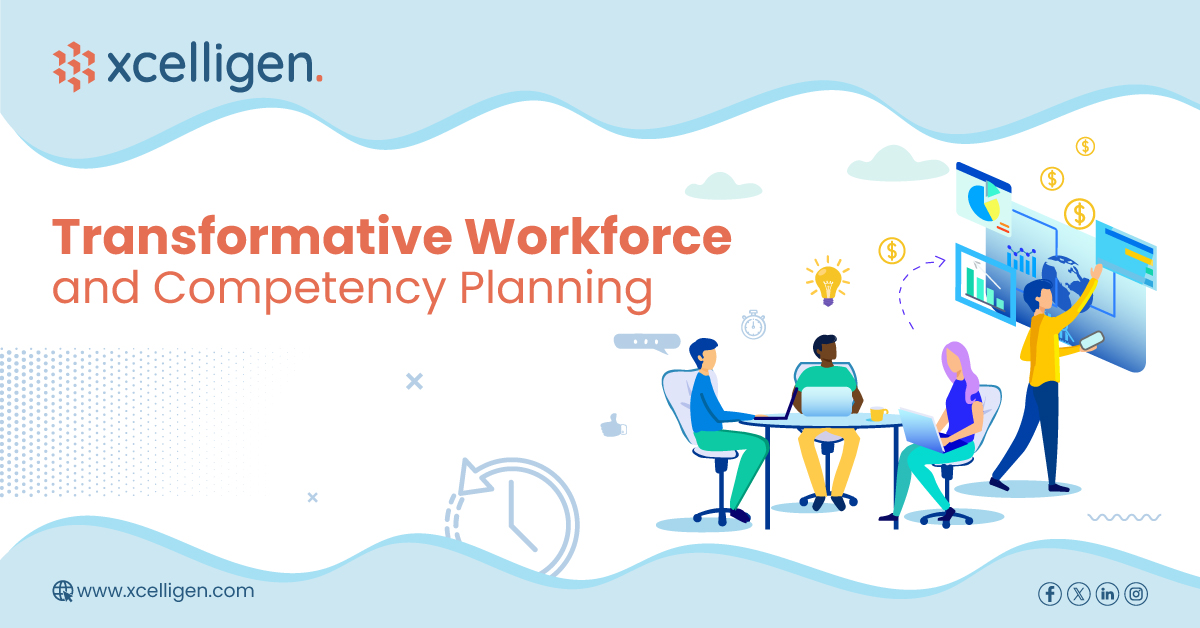A Predictive Approach to Future-Proofing an organization’s workforce
Client Overview
A key client, functioning as a state agency on the West Coast, holds a crucial role in delivering vital services to the public. With a workforce exceeding 8000 employees, the entire agency found itself ill-equipped to handle the abrupt increase in demand and shifts in workforce dynamics triggered by the COVID-19 pandemic. This situation revealed a deficiency in a resilient workforce plan and pre-preparedness, resulting in increased workloads and competency gaps.
Challenges
- Ineffective Workforce Planning: A detailed workforce plan was not associated with the client, and that is the major challenge for them in managing employee availability, especially during the COVID-19 crisis.
- Insufficient Workload Predictions: A lack of effective workload forecasting tools meant the agency was unable to anticipate or manage the increased demand for services.
- Competency Gaps: The agency encountered challenges in recognizing and resolving skill gaps among its workforce, worsened by the pandemic. This has resulted in various issues in carrying out tasks and effectively managing the overall workload.
Objective
To develop a comprehensive workforce model that can predict and manage workforce capacity, workload demands, and competency requirements, enabling the agency to efficiently navigate current and future challenges. And be prepared for any other similar situations in the future.
Solution
- Workforce Analytics Tool Development: We created a predictive workforce modeling tool by integrating and analyzing workforce data. This tool provides insights into workforce distribution across departments, categories, years of experience, and regions, along with attrition analysis and work product assessments.
- Workload Demand Forecasting: Implemented time-series forecasting techniques to predict workload demands over the next five years, helping the agency to prepare and allocate resources effectively.
- Competency Gap Analysis: Conducted a comprehensive examination to assess current skills in relation to future needs, pinpointing essential areas for employee growth and recruitment. We also conducted interviews with leadership from each Division and Department to understand their ongoing challenges, future competency needs, and possible solutions. The plan also included training existing staff and enhancing their technical as well as interpersonal skills to eliminate silos between divisions and foster communication among them to navigate challenging times collaboratively.
- Five-Year Workforce Plan: Designed a strategic plan focusing on optimizing workload, staffing levels, and identifying necessary competencies. This plan includes preparation for technological advancements and ensures staffing level meets future demands.
- Operational Analysis and Workshop Implementation: Through work breakdown structures, team interviews, and operational data analysis, we identified key challenges within the workforce. We also conducted workshops to understand organizational culture, gather insights, and provide feasible solutions.
Results
- Improved Workforce Planning: Our predictive modeling tool has significantly improved the agency’s ability to forecast and manage workforce needs. The plan has helped them overcome their pandemic struggles and surge past them with a clear mindset and strategy to achieve their organizational and departmental goals.
- Improved Workload Management: The agency is now equipped to anticipate and adapt to fluctuations in service demand.
- Bridging Competency Gaps: Through targeted training and recruitment, competency gaps are being systematically addressed.
- Strategic Resource Allocation: The agency is better positioned to justify funding levels and optimize organizational structures. The tool includes a tracker that is interconnected to their HR databases which helps the tool provide live dashboards and metrics on their current numbers and what is actually required for optimal performance.
Client Feedback
The client commended the strategic and analytical approach, highlighting the immediate improvements in workforce planning and competency management. The ability to anticipate future needs and adapt accordingly was particularly valued.
Conclusion
Our predictive and analytical approach has empowered the West Coast state client to not only overcome current challenges but also to strategically prepare for the future, ensuring sustained service delivery and operational efficiency.
